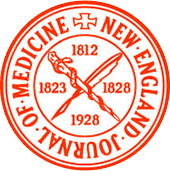Look around. You’re surrounded by plastic.
Most pens, earphones, chargers, shoes, and even furniture contain plastic. Plastic forms a part of your kitchen appliances. Your bathroom is full of it: plastic bottles, plastic toothbrushes, perhaps a plastic shower curtain. Exfoliators, toothpaste, and cleansers often contain plastic “microbeads,” too.
If you’re reading this on your cellphone or laptop, you’re touching plastic right now. In fact, the fabric used to make your clothes likely contains plastic. Your mattress, bedding, and even the stuffing in your pillow is probably plastic, as is the interior of your car.
One thing is clear: as humans, we’re extremely dependent on plastic.
The issue with plastics isn’t just that it’s ubiquitous, but where it goes when we’re done with it. It’s easy to stop thinking about your rubbish after garbage day, but what you throw into the (probably plastic) bin has a lasting effect on nature.
The good news is that we can do something about it.
The plastic problem
The International Union for Conservation of Nature (IUCN) estimates that 8 million tons of plastic ends up in the ocean every year. Of all debris in the ocean, plastic accounts for 80 percent. Now, this wouldn’t be a problem if plastic simply broke down within a few years, but plastic is not biodegradable — which means it sticks around forever.
Does recycling plastic help? Sometimes! But the majority of plastic is not recycled. Many kinds of plastic are difficult or impossible to recycle, and in many cases, the stuff we throw in a recycling bin is actually thrown away with regular garbage.
Part of why plastic is so damaging is because we consume (and throw out) a lot of it. According to the US Environmental Protection Agency (EPA), Americans generated 35.4 million tons of plastic waste in 2017.
There’s a huge demand for plastic, which means that manufacturers keep pumping it out, and we keep buying it.
It’s clear that plastic pollution isn’t a problem that can be saved by not littering. Instead, we need to take action now to reduce the plastic that we purchase. By reducing the demand for plastic items, less plastic would be produced in the first place.
The toxicity of plastics
Plastic pollution isn’t just an eyesore. It actively hurts our environment, our animals, and our people.
We’ve all seen a photograph of a turtle with a straw stuck in its nose, or a fish caught in a plastic bag. Sea creatures often eat plastics, too, especially microplastics like the microbeads in exfoliators. Not only does this kill off essential parts of ecosystems — if we end up eating those creatures, we end up consuming plastic.
And going vegetarian isn’t necessarily a solution: the IUCN notes that tiny plastic particles have been identified in tap water and salt. Because these plastics are so tiny, most filtration systems don’t filter out all of it.
The problem with consuming plastic is that it can be toxic. Some plastics are made using harmful chemicals. As a post on the Harvard Health blog explains, some of these chemicals are associated with infertility and metabolic disorders. Other plastics are known carcinogens.
These toxins can wreak havoc on the earth and the creatures who live here — including us humans.
Plastics and climate change
Plastic is a petroleum-based product. When it is burned, it releases carbon emissions into the air, which contributes to climate change. Sunlight and heat can also cause plastics to release greenhouse gasses.
Marine plastics are a particularly bad problem when it comes to climate change. Microplastics can harm plankton, which are tiny sea organisms that play a huge role in reducing atmospheric CO2 levels. In other words, plankton partly reduces the effects of our carbon emissions, thus protecting against climate change.
Additionally, manufacturing plastic contributes to climate change.
To protect our health, animals, and planet, it’s clear that we need to take drastic action — fast.
The plastic-free movement
Over the past few years, more and more people have started to realize how harmful plastic can be. The plastic-free movement, along with the zero-waste movement, has caught on quickly.
The idea of a plastic-free lifestyle is to reduce your dependency on plastic as much as possible. Many stores now sell plastic-free alternatives to cling wrap, toys, toothbrushes, sanitary products, razors, and more. Retail stores are phasing out plastic bags and replacing them with stronger, reusable cloth alternatives.
Small ways to reduce your plastic consumption include:
- Getting refills of your household detergents, pantry items, and toiletries instead of buying a new product in plastic packaging
- Opting for hemp, cotton, and linen clothing over clothing made with synthetic fibers
- Using a tin instead of a plastic lunchbox or Styrofoam container
- Avoiding disposable plastic straws and cutlery
- Reusing plastic bags, cutlery, and straws as often as possible
- Purchasing second-hand items wherever possible
The point is not to throw out every plastic thing in your home and replace it with a wooden version. After all, once you throw away all the plastic straws that have been accumulating in your draw, they could end up polluting nature — which is exactly what you want to avoid.
Instead, the point is to reduce the amount of plastic you buy in the first place.
Reducing your plastic consumption requires a lot of intentionality and planning. If you know you’re going to get a coffee later today, you’d have to grab a reusable cup to avoid a Styrofoam version.
Pushing for a circular economy
As a National Geographic article said, a circular economy could save the world.
A “circular economy” is one where most items are reused, repurposed, and recycled. When a circular economy is strong, there’s a lower demand for manufacturers to create new items, including plastic items. In a circular economy, we’d buy very few new things, and we’d throw away even less.
We’d reduce our use of single-use plastics — in other words, items that you use once, throw away, and then replace like plastic packaging on a snack or a straw. You can do this by reusing plastic things as often as possible, recycling them, or donating them
While society is a far way off from a circular economy, we can do the following to reduce waste:
- Mend old clothing, furniture, and appliances instead of disposing of and replacing them
- Donate unwanted items to our neighbors, family members, charities, and second-hand stores
- Reuse things we’d usually throw away, such as tins, plastic straws, glass jars, and packaging
- Purchase second-hand items wherever possible
- Recycle items that we can’t reuse or donate
- Purchase high-quality items that don’t require you to replace them often
- Purchase biodegradable items so that they can be composted
By reducing demand for new items, particularly new plastic items, we can avoid harming the planet further.
Beyond individual action
Because the problem of plastic is so widespread, individual action will only get us so far. What’s more effective is to advocate for governments and corporations to reduce plastic waste.
Voting, contacting local and national government officials, and protesting are effective ways to promote change. Support businesses that reduce plastic waste in a real way — not just ones who say they’re “going green,” but those who actively try to reduce their carbon emissions.
While individual action does positively impact the environment, community action is a more effective way to save the planet. And that’s what we’re all about at Knew Health: community.
Will we ever be fully rid of plastics?
Probably not, and that’s not necessarily a bad thing.
In some cases, plastics are irreplaceable. Plastics play a huge role in surgical and medical equipment. For example, plastic syringes and vials are ideal because they’re hard to break, lightweight, and cheap to replace. Unfortunately, they also can’t be recycled because they’re biohazardous.
Plastics also make up an important part of computers, solar panels, hearing aids, vehicles, and more. Even items like plastic straws, which have been the subject of a lot of hate, are necessary for some people with disabilities who can’t use plastic-free alternatives.
However, most of us can certainly use a lot less plastic than what we’re using now. By reducing plastic usage, bit by bit, we can make a positive difference to the world around us.
A plastic-free world might not be possible, but we can and should still reduce plastic waste in our own lives. We can also organize and work towards collective action, encouraging our governments and corporations to create more eco-friendly policies.
Take one small step today towards reducing plastic waste: use your own water bottle, choose a bamboo toothbrush, or skip that exfoliator that contains plastic microbeads. The earth will thank you for it!
Resources
- Boucher, J. et al. (2017). Primary Microplastics in the Oceans: A Global Evaluation of Sources. https://portals.iucn.org/library/node/46622
- Drahl, C. (2016). What You Need To Know About Microbeads, The Banned Bath Product Ingredients. https://www.forbes.com/sites/carmendrahl/2016/01/09/what-you-need-to-know-about-microbeads-the-banned-bath-product-ingredients/?sh=3644e86d7a33
- Kunzig, R. (2020). Is a world without trash possible? https://www.nationalgeographic.com/magazine/article/how-a-circular-economy-could-save-the-world-feature
- Is plastic a threat to your health? (2019). https://www.health.harvard.edu/staying-healthy/is-plastic-a-threat-to-your-health
- Marine Plastics. (undated). https://www.iucn.org/resources/issues-briefs/marine-plastics
- Plastics: Material-Specific Data. (undated). https://www.epa.gov/facts-and-figures-about-materials-waste-and-recycling/plastics-material-specific-data
- What is a Circular Economy? (undated). Available: https://www.ellenmacarthurfoundation.org/circular-economy/concept
Disclaimer: This information is being provided to you for educational and informational purposes only. It is being provided to educate you about how to take care of your body and as a self-help tool for your own use so that you can reach your own health goals. It is not intended to treat or cure any specific illness and is not to replace the guidance provided by your own medical practitioner. This information is to be used at your own risk based on your own judgment. If you suspect you have a medical problem, we urge you to take appropriate action by seeking medical attention.









































